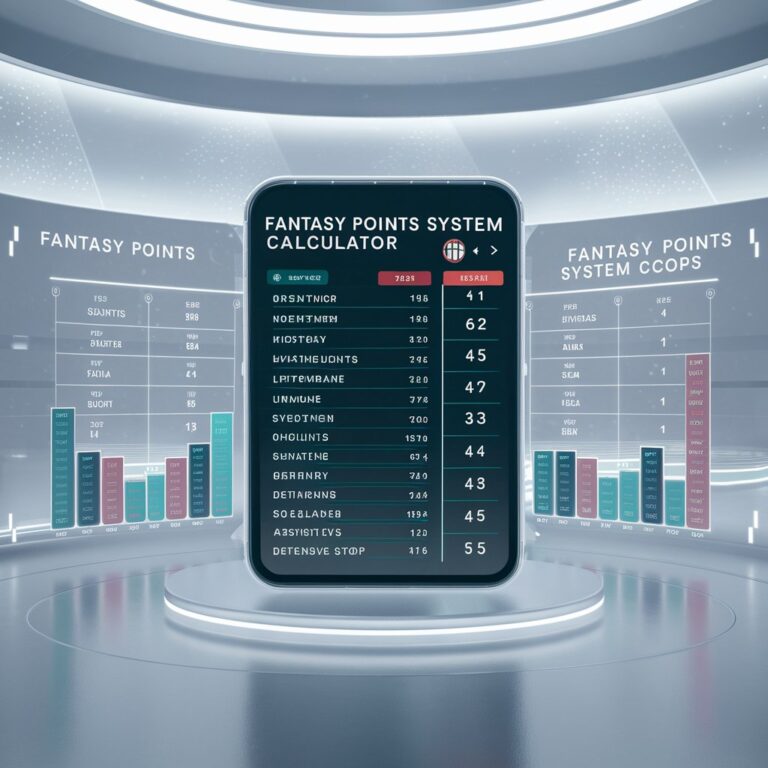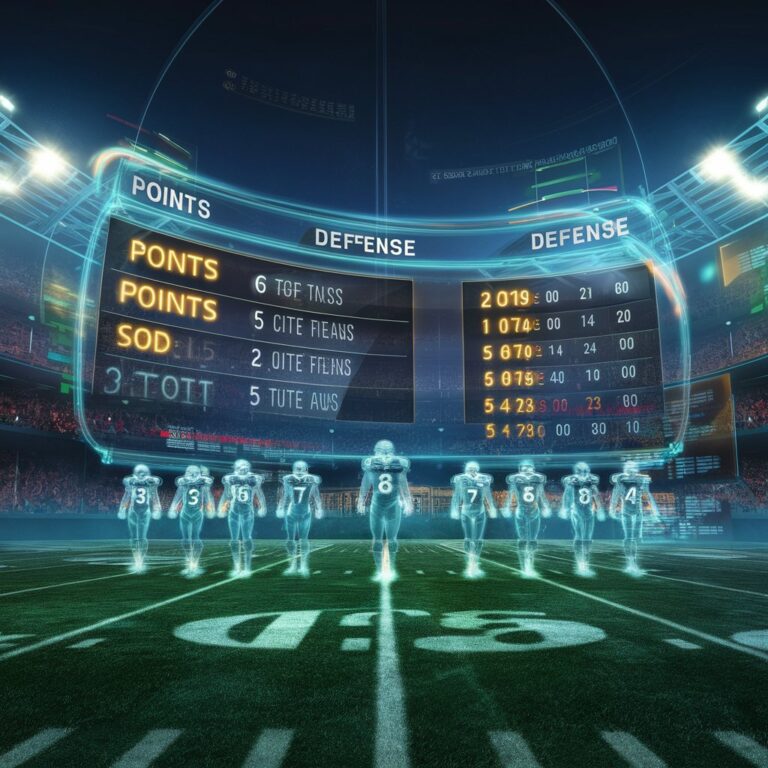How Are Running Back Fantasy Points Calculated?
When it comes to fantasy football, running backs are some of the most important players on the field. They’re responsible for carrying the ball, catching passes, and even blocking for the quarterback.
But how are running back fantasy points calculated?
In this article, we’ll break down the scoring system for running backs in fantasy football and show you how to calculate their points.
how are running back fantasy points calculated?
- Rushing Yards: Rushing yards are the bread and butter of a running back’s fantasy points. Every 10 yards they gain on the ground is worth one point. So, if a running back rushes for 100 yards in a game, that’s 10 points right off the bat.
- Receiving Yards: Running backs also have the opportunity to catch passes out of the backfield, and those yards count towards their fantasy points as well. For every 10 receiving yards, they gain, they earn one point. This means that a running back who catches a lot of passes can rack up points quickly.
- Touchdowns: Scoring touchdowns is the ultimate goal in football, and it’s no different in fantasy football. When a running back scores a touchdown, they earn six points for their team. This can come in the form of a rushing touchdown, receiving touchdown, or even a return touchdown.
- Two-Point Conversions: If a running back is able to convert a two-point conversion, they’ll earn an additional two points for their fantasy team. This can be a valuable source of points, especially in close games.
- Fumbles: While fumbles don’t directly earn or lose fantasy points, they can have a big impact on a running back’s performance. If a running back fumbles the ball, it can result in lost yardage or even a turnover, which can hurt their team’s chances of winning and ultimately hurt their fantasy point total.

The most common way to calculate running back fantasy points is through standard scoring systems. Below is a typical breakdown of how points are awarded:
Action Points Awarded
Rushing Yard 1 point per 10 yards
Receiving Yard 1 point per 10 yards
Rushing Touchdown 6 points
Receiving Touchdown 6 points
Fumble Lost -2 points
PPR (Points Per Reception) Scoring
In PPR leagues, running backs gain additional value. Each reception adds to their total points, making pass-catching running backs particularly valuable. Here’s a breakdown of PPR scoring:
Action Points Awarded
Rushing Yard 1 point per 10 yards
Receiving Yard 1 point per 10 yards
Reception 0.5 points
Rushing Touchdown 6 points
Receiving Touchdown 6 points
Fumble Lost -2 points
Factors Influencing Running Back Fantasy Points
Rushing Attempts
The number of rushing attempts a running back receives directly impacts their fantasy points. More carries generally translate to more yards and touchdowns. A workhorse back who regularly sees 20+ carries per game is often more valuable in fantasy than a back with fewer touches.
Receiving Opportunities
In today’s NFL, versatility is key. Running backs who can catch passes provide additional scoring opportunities. This is especially true in PPR formats, where every reception adds to their total points.
Game Script
Game script refers to the flow of the game, which can significantly affect how often a running back is used. In games where a team is leading, they may run the ball more to control the clock. Conversely, in games where they are trailing, they may focus on passing, which could reduce rushing attempts but increase receiving opportunities.
Offensive Line Play
The effectiveness of a running back is often tied to the quality of the offensive line. A strong offensive line can create larger running lanes, leading to more rushing yards and a higher chance of scoring.
Matchup Considerations
The opposing defense plays a crucial role in a running back’s performance. Some defenses are better at stopping the run, while others may struggle against pass-catching running backs. Analyzing matchups can provide insights into expected performance.
Importance of League Settings
Standard vs. PPR vs. Half-PPR
Understanding your league’s scoring system is essential for drafting and lineup decisions. In PPR leagues, prioritize versatile running backs who can contribute in the passing game. In standard leagues, focus more on those who are likely to get more carries and touchdowns.
Custom Scoring Settings
Some leagues allow for custom scoring settings. Be sure to familiarize yourself with any unique scoring rules that could affect running back values, such as bonuses for long touchdowns or milestones.
Tips for Maximizing Running Back Fantasy Points
Draft Strategy
Prioritize Early Round RBs: Top-tier running backs can be game-changers. Consider selecting an RB in the first round.
Handcuffing: Drafting a backup running back (handcuff) can protect your investment in an RB. If the starter gets injured, the handcuff could become a valuable asset.
Monitor Injuries: Stay updated on injury reports. Players returning from injury can often provide high value.
Weekly Lineup Decisions
Matchup Analysis: Always check the matchup before setting your lineup. Favorable matchups can lead to higher point totals.
Flex Position Utilization: If your league allows it, consider starting an additional RB in the flex position, especially if they have a good matchup.
Stay Informed: Follow player news, injury updates, and team changes to make informed decisions weekly.
You can check out our blog: How are Fantasy Points Calculated?
Conclusion:
In conclusion, running backs are some of the most valuable players in fantasy football, and understanding how their points are calculated is essential to building a winning team.By focusing on rushing and receiving yards, touchdowns, two-point conversions, and minimizing fumbles, you can help ensure that your running back is a top performer in your fantasy league.
By grasping the various scoring systems, the impact of game situations, and strategic drafting, you can maximize your team’s potential. Always keep an eye on player performance trends and matchups to make the best decisions each week. With the right knowledge and strategies, you can turn your fantasy football team into a powerhouse and outsmart your competition.
Tips for Fantasy Points Calculator:
Now that you know the entire process, you have 2 options.
- You can do the entire hectic all by yourself manually. Where obviously there is a high chance to make a mistake.
- Be smart and use our Fantasy Points Calculator. Which is free of cost. Check it out now!





